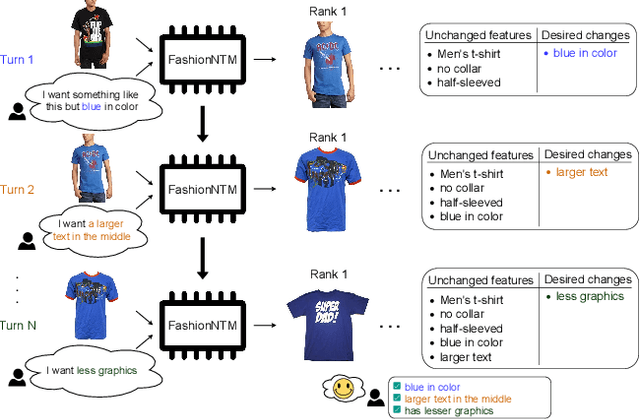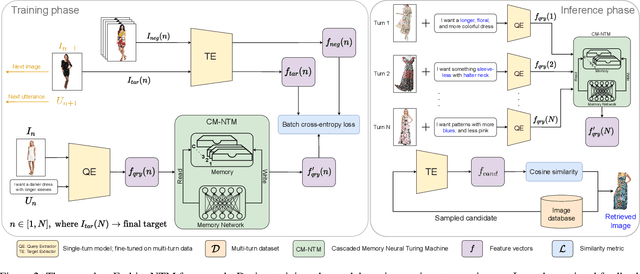Anwesan Pal
The Empirical Impact of Data Sanitization on Language Models
Nov 08, 2024



Abstract:Data sanitization in the context of language modeling involves identifying sensitive content, such as personally identifiable information (PII), and redacting them from a dataset corpus. It is a common practice used in natural language processing (NLP) to maintain privacy. Nevertheless, the impact of data sanitization on the language understanding capability of a language model remains less studied. This paper empirically analyzes the effects of data sanitization across several benchmark language-modeling tasks including comprehension question answering (Q&A), entailment, sentiment analysis, and text classification. Our experiments cover a wide spectrum comprising finetuning small-scale language models, to prompting large language models (LLMs), on both original and sanitized datasets, and comparing their performance across the tasks. Interestingly, our results suggest that for some tasks such as sentiment analysis or entailment, the impact of redaction is quite low, typically around 1-5%, while for tasks such as comprehension Q&A there is a big drop of >25% in performance observed in redacted queries as compared to the original. For tasks that have a higher impact, we perform a deeper dive to inspect the presence of task-critical entities. Finally, we investigate correlation between performance and number of redacted entities, and also suggest a strategy to repair an already redacted dataset by means of content-based subsampling. Additional details are available at https://sites.google.com/view/datasan.
Household navigation and manipulation for everyday object rearrangement tasks
Dec 11, 2023



Abstract:We consider the problem of building an assistive robotic system that can help humans in daily household cleanup tasks. Creating such an autonomous system in real-world environments is inherently quite challenging, as a general solution may not suit the preferences of a particular customer. Moreover, such a system consists of multi-objective tasks comprising -- (i) Detection of misplaced objects and prediction of their potentially correct placements, (ii) Fine-grained manipulation for stable object grasping, and (iii) Room-to-room navigation for transferring objects in unseen environments. This work systematically tackles each component and integrates them into a complete object rearrangement pipeline. To validate our proposed system, we conduct multiple experiments on a real robotic platform involving multi-room object transfer, user preference-based placement, and complex pick-and-place tasks. Project page: https://sites.google.com/eng.ucsd.edu/home-robot
FashionNTM: Multi-turn Fashion Image Retrieval via Cascaded Memory
Aug 20, 2023



Abstract:Multi-turn textual feedback-based fashion image retrieval focuses on a real-world setting, where users can iteratively provide information to refine retrieval results until they find an item that fits all their requirements. In this work, we present a novel memory-based method, called FashionNTM, for such a multi-turn system. Our framework incorporates a new Cascaded Memory Neural Turing Machine (CM-NTM) approach for implicit state management, thereby learning to integrate information across all past turns to retrieve new images, for a given turn. Unlike vanilla Neural Turing Machine (NTM), our CM-NTM operates on multiple inputs, which interact with their respective memories via individual read and write heads, to learn complex relationships. Extensive evaluation results show that our proposed method outperforms the previous state-of-the-art algorithm by 50.5%, on Multi-turn FashionIQ -- the only existing multi-turn fashion dataset currently, in addition to having a relative improvement of 12.6% on Multi-turn Shoes -- an extension of the single-turn Shoes dataset that we created in this work. Further analysis of the model in a real-world interactive setting demonstrates two important capabilities of our model -- memory retention across turns, and agnosticity to turn order for non-contradictory feedback. Finally, user study results show that images retrieved by FashionNTM were favored by 83.1% over other multi-turn models. Project page: https://sites.google.com/eng.ucsd.edu/fashionntm
Role of reward shaping in object-goal navigation
Jul 16, 2022

Abstract:Deep reinforcement learning approaches have been a popular method for visual navigation tasks in the computer vision and robotics community of late. In most cases, the reward function has a binary structure, i.e., a large positive reward is provided when the agent reaches goal state, and a negative step penalty is assigned for every other state in the environment. A sparse signal like this makes the learning process challenging, specially in big environments, where a large number of sequential actions need to be taken to reach the target. We introduce a reward shaping mechanism which gradually adjusts the reward signal based on distance to the goal. Detailed experiments conducted using the AI2-THOR simulation environment demonstrate the efficacy of the proposed approach for object-goal navigation tasks.
Target driven visual navigation exploiting object relationships
Mar 15, 2020



Abstract:Recently target driven visual navigation strategies have gained a lot of popularity in the computer vision and reinforcement learning community. Unfortunately, most of the current research tends to incorporate sensory input into a reward-based learning approach, with the hope that a robot can implicitly learn its optimal actions through recursive trials. These methods seldom generalize across domains as they fail to exploit natural environment object relationships. We present Memory-utilized Joint hierarchical Object Learning for Navigation in Indoor Rooms (MJOLNIR), a target-driven visual navigation algorithm, which considers the inherent relationship between "target" objects, along with the more salient "parent" objects occurring in its surrounding. Extensive experiments conducted across multiple environment settings show $\approx \textbf{30 %}$ improvement over the existing state-of-the-art navigation methods in terms of the success rate. We also show that our model learns to converge much faster than other algorithms. We will make our code publicly available for use in the scientific community.
"Looking at the right stuff" -- Guided semantic-gaze for autonomous driving
Nov 24, 2019



Abstract:In recent years, predicting driver's focus of attention has been a very active area of research in the autonomous driving community. Unfortunately, existing state-of-the-art techniques achieve this by relying only on human gaze information, thereby ignoring scene semantics. We propose a novel Semantics Augmented GazE (SAGE) detection approach that captures driving specific contextual information, in addition to the raw gaze. Such a combined attention mechanism serves as a powerful tool to focus on the relevant regions in an image frame in order to make driving both safe and efficient. Using this, we design a complete saliency prediction framework -- SAGE-Net, which modifies the initial prediction from SAGE by taking into account vital aspects such as distance to objects (depth), ego vehicle speed, and pedestrian crossing intent. Exhaustive experiments conducted through four popular saliency algorithms show that on 49/56 (87.5%) cases -- considering both the overall dataset and crucial driving scenarios, SAGE outperforms existing techniques without any additional computational overhead during the training process. The final paper will be accompanied by the release of our dataset and relevant code.
DEDUCE: Diverse scEne Detection methods in Unseen Challenging Environments
Aug 01, 2019



Abstract:In recent years, there has been a rapid increase in the number of service robots deployed for aiding people in their daily activities. Unfortunately, most of these robots require human input for training in order to do tasks in indoor environments. Successful domestic navigation often requires access to semantic information about the environment, which can be learned without human guidance. In this paper, we propose a set of DEDUCE - Diverse scEne Detection methods in Unseen Challenging Environments algorithms which incorporate deep fusion models derived from scene recognition systems and object detectors. The five methods described here have been evaluated on several popular recent image datasets, as well as real-world videos acquired through multiple mobile platforms. The final results show an improvement over the existing state-of-the-art visual place recognition systems.
 Add to Chrome
Add to Chrome Add to Firefox
Add to Firefox Add to Edge
Add to Edge